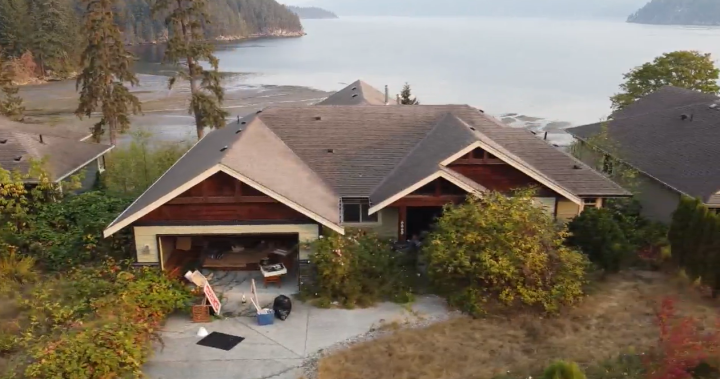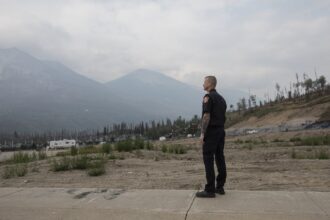In the picturesque community of Sechelt on British Columbia’s Sunshine Coast, what once represented the Canadian dream has transformed into a nightmare for dozens of homeowners. Five years after being forced to evacuate their properties in the Seawatch neighborhood due to sinkhole concerns, residents find themselves trapped in a bureaucratic and financial limbo with no resolution in sight.
“We’ve lost everything—our homes, our savings, our sense of security,” explains Rod Goy, who purchased his dream retirement home in the area just months before the evacuation order came down in February 2019. “Yet we’re still responsible for mortgages on properties we can’t live in, can’t sell, and can’t even visit.”
The crisis began when sinkholes started appearing in the neighborhood, prompting officials to declare the area unsafe for habitation. Fourteen homes, with a combined assessed value exceeding $11 million, have since sat abandoned—deteriorating with each passing season while their owners continue to face financial obligations.
Despite numerous appeals for assistance, both the provincial government and the District of Sechelt maintain they have no legal obligation to compensate homeowners. The municipality argues that developers and geotechnical engineers who approved the subdivision should bear responsibility, while homeowners point to what they believe was insufficient oversight during the development approval process.
According to documents obtained through freedom of information requests, concerns about the land’s stability existed as early as 2006, raising questions about why development was permitted to proceed. Provincial geologists had identified potential risks associated with the area’s karst topography—a landscape characterized by underground drainage systems that can create sinkholes when they collapse.
“These weren’t just ordinary homebuyers,” says Ellen Lacharity, spokesperson for the Seawatch Homeowners Association. “These were people who did their due diligence, checked municipal approvals, and trusted the system would protect them. That system has completely failed them.”
The financial impact has been devastating. Most affected homeowners continue paying mortgages on uninhabitable properties while also covering rent or second mortgages elsewhere. Insurance companies have largely denied claims, citing exclusions for earth movement, leaving homeowners with no financial recourse.
The situation has taken not just a financial toll but a profound emotional one as well. Three homeowners have since died, with family members attributing their declining health partially to the stress of the situation. Others report diagnoses of depression, anxiety, and PTSD.
“We’ve been told repeatedly that there’s simply no money available to help us,” says Greg Latham, who has become an advocate for the group. “Yet when other natural disasters strike in B.C., government assistance materializes. Why are we different?”
The District of Sechelt has explored options to address the situation, including commissioning engineering studies to assess potential remediation costs. The most recent estimate for stabilizing the area exceeds $40 million—a sum the municipality of approximately 10,000 residents says it cannot afford without significant provincial or federal assistance.
Meanwhile, some homeowners have pursued legal action against various parties involved in the development, though these cases have moved slowly through the courts and have yet to provide any relief. The complex web of potential liability—spanning developers, engineering firms, insurance companies, and various levels of government—has created a legal quagmire that could take years to resolve.
As the abandoned homes continue to deteriorate, becoming targets for vandalism and posing potential safety hazards, residents of neighboring communities have also expressed concerns. Property values in adjacent areas have reportedly declined, and the ghost-like appearance of the neighborhood serves as a constant reminder of a community in crisis.
What remains unclear is how this situation will ultimately be resolved. Without intervention from higher levels of government, the affected homeowners may never receive compensation for their losses. As Canada faces increasing challenges from climate change and aging infrastructure, could the Seawatch disaster serve as a warning about the potential costs of development in geologically sensitive areas? More importantly, who should bear those costs when systems designed to protect homeowners fail so dramatically?










